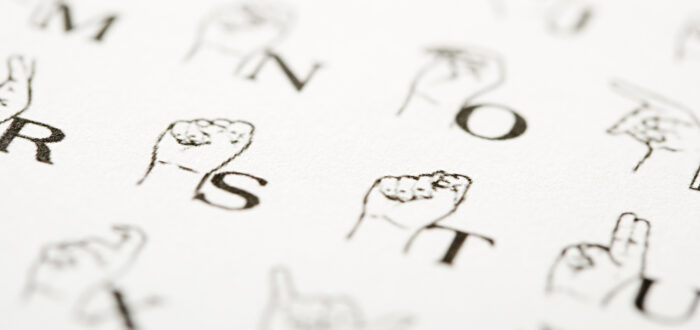Sign language, a complex and nuanced form of communication used by deaf and hard-of-hearing individuals, has a rich history that spans centuries and continents. It’s a misconception to think of sign language as a singular, universal language. In reality, there are numerous sign languages around the world, each with its own syntax, grammar, and vocabulary.
Among the most widely recognized of these is American Sign Language (ASL). The journey from the earliest forms of sign communication to the ASL we know today is a fascinating tale of evolution, cultural exchange, and the enduring human spirit to connect.
Origins of Sign Language
The origins of sign language can be traced back to the earliest human civilizations. Historical accounts suggest that ancient communities used rudimentary sign systems to communicate, especially in situations where verbal communication was challenging or impossible.
These early gestures were likely simple and context-bound, far from the structured sign languages we see today. However, they laid the foundational concept that communication is not solely reliant on spoken words.
European Influence
The development of sign language as a formal means of communication is significantly attributed to the European continent, particularly in the 17th and 18th centuries. One of the earliest and most influential figures in this development was Juan Pablo Bonet, a Spanish monk who published “Reducción de las letras y arte para enseñar a hablar a los mudos” (“Reduction of letters and art for teaching mute people to speak”) in 1620. Bonet’s work was groundbreaking in that it proposed a method of using manual signs and symbols to teach deaf individuals to communicate.
France played a pivotal role in the evolution of sign language, particularly through the efforts of Charles-Michel de l’Épée in the 18th century. Abbé de l’Épée founded the first public school for deaf students in Paris, where he developed a system of standardized signs, known as Old French Sign Language (VLSF), to educate his students. His methods laid the groundwork for the instruction of sign language and deaf education.
The Birth of American Sign Language
The story of American Sign Language (ASL) begins with a young American named Thomas Hopkins Gallaudet. In the early 19th century, Gallaudet met Alice Cogswell, a young deaf girl, which ignited his passion for deaf education. His quest for effective teaching methods led him to Europe, where he met Laurent Clerc, a deaf teacher at the National Institute for Deaf-Mutes in Paris.
Gallaudet persuaded Clerc to return with him to the United States, and together, they founded the American School for the Deaf in Hartford, Connecticut, in 1817. This institution became the cradle of American Sign Language. ASL emerged as a blend of the French Sign Language brought by Clerc, the indigenous sign languages used by deaf communities in the United States, and the home signs developed by deaf individuals.
One other unique contributor to the development of American Sign Language took place on Martha’s Vineyard. From the early 18th century, Martha’s Vineyard had a significantly higher rate of hereditary deafness than the mainland. This unusual demographic pattern led to the development of Martha’s Vineyard Sign Language or MVSL. MVSL was not only used by the deaf community, but also by hearing residents as well.
ASL Today
Today, ASL is recognized as a complete, natural language with its own syntax, grammar, and lexicon. It is the primary language of many deaf North Americans and has influenced sign language systems around the world. ASL’s journey from its European roots to its current form is a testament to the adaptability and resilience of human communication.
Sign language is not merely a substitute for spoken language; it is a rich, expressive, and vital form of communication in its own right, offering a window into the diverse experiences of the deaf and hard-of-hearing community.
Need Help? Have a Question? Contact Us Today!
At REM Audiology, our hearing care professionals are on hand to help you with your hearing needs. Hearing assessments are quick and painless, and treating your hearing loss can go a long way towards improving your quality of life. To book your appointment, call us today on (888) 710-5734. Alternatively, click here to contact us online.

